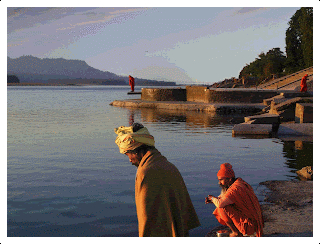 Kahalgaon: Although I started my Bihar journey from Bhagalpur, but I am narrating my visit to Kahalgaon first and foremost. That is because it was in Kahalgaon I realized that this project of mine is much more than just a photographic journey. The plight of the fishing community in this town was heart-breaking.
Kahalgaon: Although I started my Bihar journey from Bhagalpur, but I am narrating my visit to Kahalgaon first and foremost. That is because it was in Kahalgaon I realized that this project of mine is much more than just a photographic journey. The plight of the fishing community in this town was heart-breaking.
India used to have "zameendars" during the British occupation. [Zameen = Land; Dar = Owner/Lord]. In the state of Bihar the waters of river Ganga were also "owned" by "zameendars" and this system was termed "paanidari" [Paani = Water; Dar = Owner/Lord].
Although "zameendari" system was abolished by the Indian government in 1954, the "paanidari" system was not. It thrived for a long time, with "paanidars" holding onto waters of river Ganga and making the fishermen fish in those waters. But the catch however belonged to the "paanidars" and the fishermen were left with almost nothing. Plus they were taxed on top of that. [According to Tarun Kanti Bose, the Ganga was divided into two stretches between Sultanganj and Kahalgaon, each stretch belonging to one "zameendar", thus there were only two such "paanidars"].
In 1982 the fishing community from the Kahalgaon area started a movement to get the "paanidari" system abolished. It was the Ganga Mukti Andolan [Save the Ganga Movement].
The fishing community won their battle against the "paanidari" system in 1990, only to lose it again in 1991. This time to the government. The waters of river Ganga from Sultangnaj all the way up to Kahalgaon and beyond (areas bordering the state of West Bengal) were declared a sanctuary. As a result fishing was prohibited!
--to be continued--

